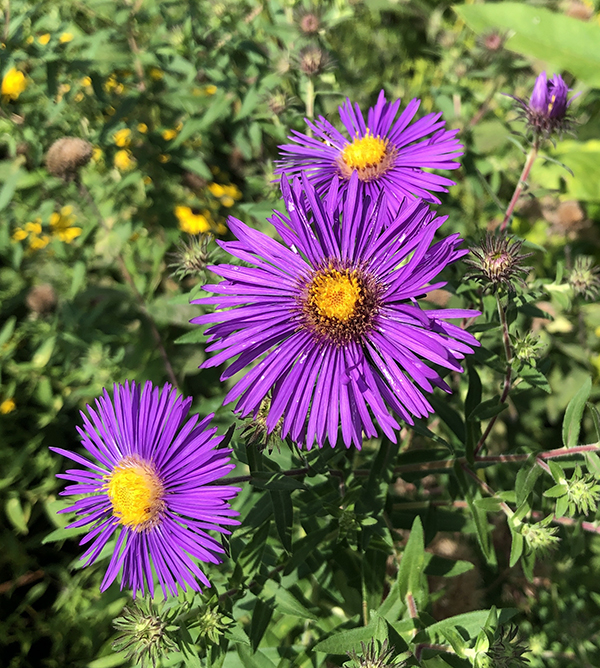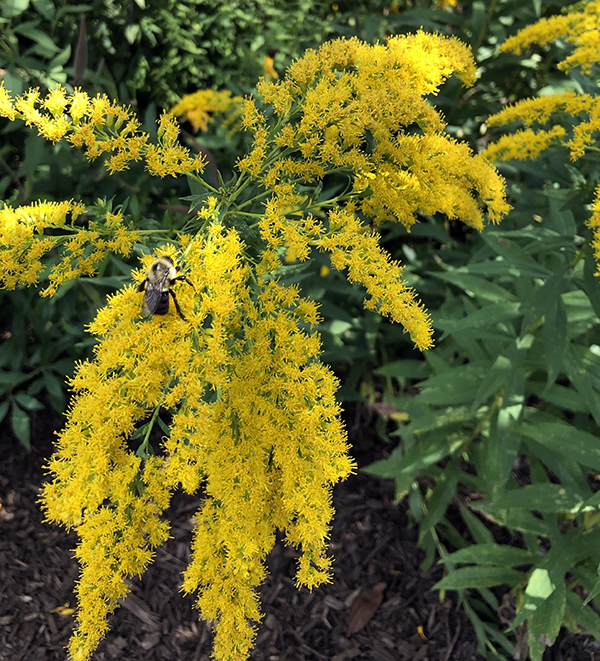
September 07, 2023| Education, Environment, LHF Environmental & Cultural Center
By: Marty and Laurie Kane
While the native gardens at the Lake Hopatcong Foundation baked in the heat this week, our late summer flowers took front and center. It was great to see several monarch butterflies and many other pollinators visiting, all of which help sustain our ecosystem. This week, we feature two wonderful native plants currently flowering on our grounds.
 |
 |
| blue-stemmed goldenrod | New England aster |
Blue-stemmed goldenrod (Solidago caesia) prefers partial sun to shade, grows to three feet tall, and produces clusters of yellow flowers that bloom all along the purplish stem. Once under consideration to become the national flower, goldenrod produces much of the color along American roadways from August to October.Native Americans used the leaves for a tea and medicinally to treat intestinal gas, wounds, and toothache. Goldenrod hosts the caterpillars of several moth species, butterflies and bees seek nectar from its flowers, and songbirds eat the seeds. It is a long-held misconception that goldenrod causes hay fever or allergies. It will grow easily in your garden and deer generally ignore it.
With magnificent blooms ranging from blue-purple to lavender-pink, New England aster (Aster novae-angliae) is a highlight of the late-season landscape. Easily grown in a broad range of soils and conditions, it thrives in full sun but also does well in partial shade and can grow three to six feet tall. Native Americans used the edible leaves and flowers for a number of medicinal purposes. The plant provides a critical fall nectar source for pollinators, especially monarch butterflies as they prepare for fall migration to Mexico. New England asters will bring color to your garden from August to October and are considered deer-resistant.
Please stop by our gardens at 125 Landing Road, Landing, and enjoy a look. You may find a new variety to try in your own garden next season!